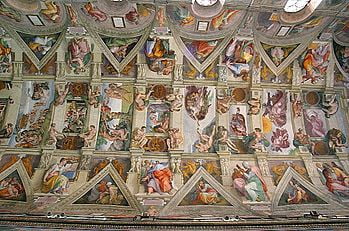Visiting Rome without seeing one of the world’s most famous works of art, Michelangelo’s Sistine Chapel, is simply unthinkable. Located within Vatican City, it’s a must-see on any tour of the Vatican Museums. Let’s delve into the history of this incredible masterpiece that remains a source of pride for both Rome and all of Italy.
Constructed between 1475 and 1481, the chapel owes its name to Pope Sixtus IV della Rovere. Initially a private chapel, it hosted important ecclesiastical ceremonies during Holy Years and served as the venue for papal conclaves. The interior features a single nave with a decorated lunette above each of its twenty windows.
Originally, the chapel’s decoration was entrusted to the artist Pier Matteo d’Amelia, who merely painted a deep blue sky adorned with stars. However, the iconic ceiling of the Sistine Chapel, painted by Michelangelo, was commissioned by Pope Julius II della Rovere. While the Pope initially requested a depiction of the twelve apostles, Michelangelo’s interpretation, whether intentional or not, fell short of the Pope’s expectations. This led to greater creative freedom for the artist, resulting in one of the Renaissance’s most celebrated masterpieces. The Nine Stories of Genesis, the Prophets, the Sibyls, and the Ignudi are just some of the Michelangelo frescoes you can admire in the magnificent setting of Rome’s Sistine Chapel.
Explore Rome with Clidante: contact Us

